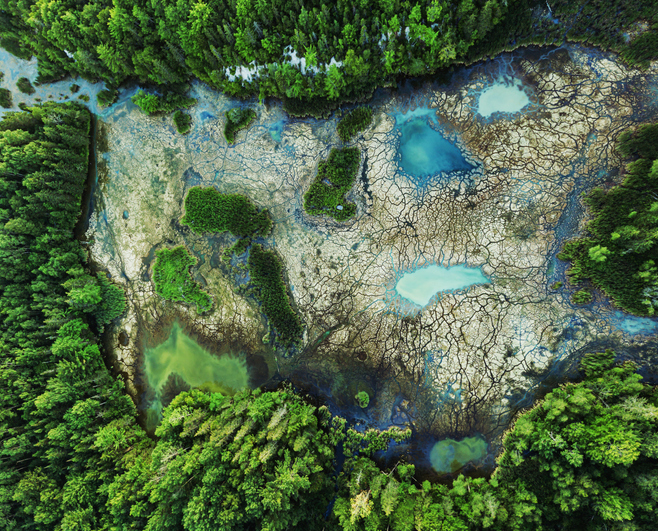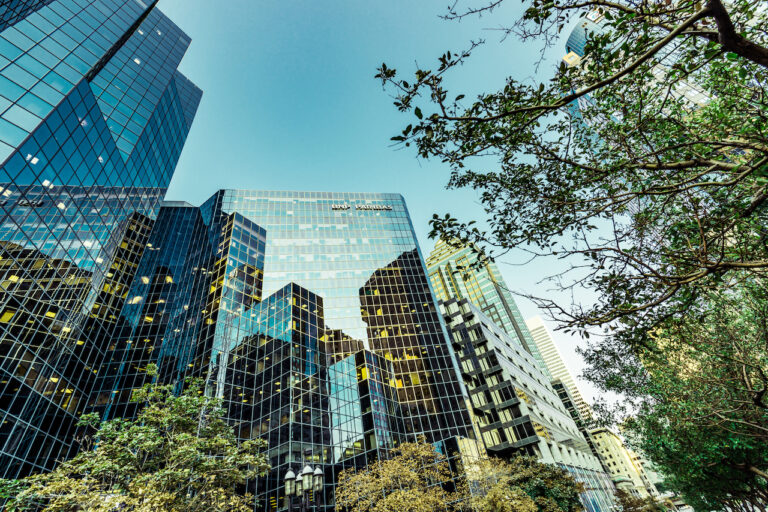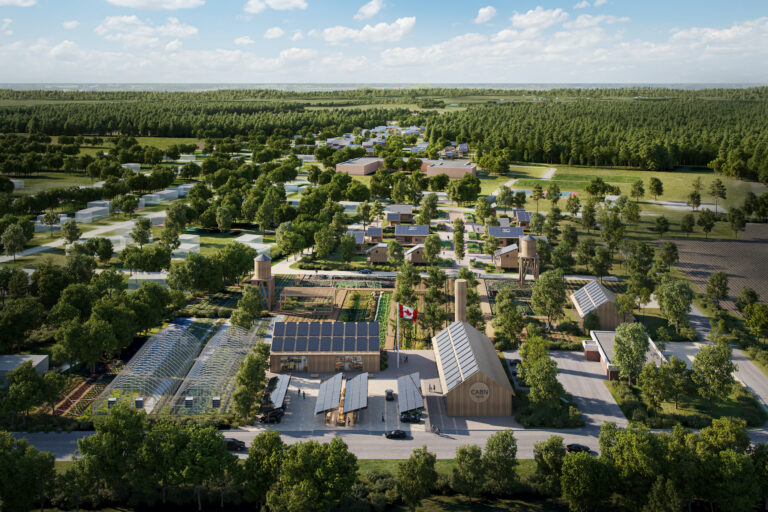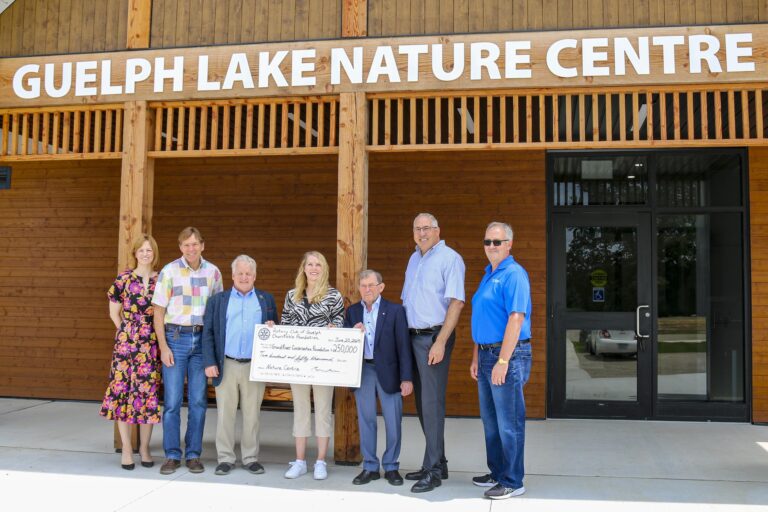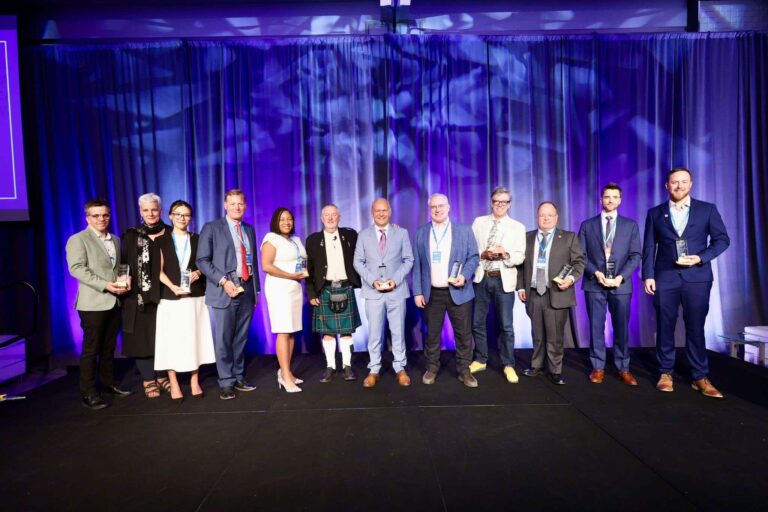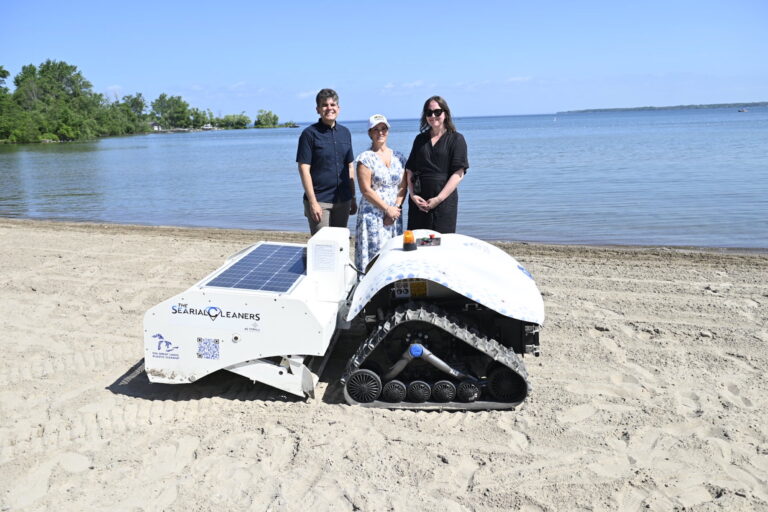Monday, June 30, 2025
The Canadian Climate Institute, the country’s leading climate research and policy organization, and The Centre for Indigenous Environmental Resources, Canada’s first indigenous-directed environmental non-profit charitable organization, recently held the “Honouring Indigenous Climate Leadership” roundtable.
The panel’s purpose was to exhibit indigenous-led research and policy in response to climate change. The pinnacle of the discussion was how indigenous self-determination is integral to designing successful climate policies at a regional, provincial, territorial, and national level.
The series is currently in its third year and was developed when a gap was recognized in indigenous-led research in Canada. The roundtable series takes on a unique approach by utilizing storytelling from people in the indigenous communities sharing their experiences. The discussion surrounded three case studies and was facilitated by the authors of each case study.
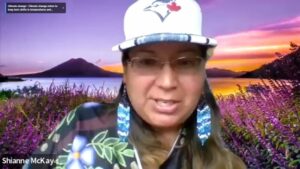
Shianne McKay from Centre for Indigenous Environmental Resources.
Moderator Shianne McKay, a senior project manager at the Centre for Indigenous Environmental Resources, opened the roundtable by playing a traditional water song on the drum, encouraging attendees to imagine themselves going down a river on a canoe.
Rick Smith, president of the Canadian Climate Institute, provided opening remarks: “Our institute is committed to ensuring our work supports indigenous self-determination. And that indigenous ways of knowing, being, and doing are reflected in policy recommendations. We recognize that this work must be led for and by indigenous people. ”
The power of Acimowin
The first panellist, Sandra Lamouche is nehiyaw iskwew, a member of the Bigstone Cree Nation, her mother’s community. Her father is from Kapawe’no First Nation. She discussed her case study, The power of Acimowin (Storytelling) for climate change policy. The case study looks at storytelling and the medicine wheel as well as how indigenous ways of knowing and being should inform policy.
Having done her master’s thesis on indigenous dance and wellness, Lamouche came from a position of both education and lived experience. Lamoche’s work expresses the importance of story’s ability to change someone’s behaviour as well as anti-racism.
She discussed some of the inequalities when it comes to penalties and privileges for indigenous people. One issue raised was that the indigenous communities have proven effective climate solutions but Western, capitalist society does not take these methods seriously and use them to inform policy. “Indigenous stories are often seen as a part of the past and they’re actually instructions for the future.”
Community is the solution
The second case study, Community is the solution: Experiences from the 2021 extreme heat emergency in urban, rural and remote B.C. First Nations, was authored and presented by Lilia Yumagulova, Emily Dicken, Patrick Michell, Sheri Lysons, Casey Gabriel, and Randy Carpenter. This case study highlights the 2021 heat wave and how it impacted the indigenous peoples in British Columbia.
Randy Carpenter, of the Heiltsuk First Nation, shared a personal story from his community, Bella Bella, BC. Carpenter recalled growing up from ages 15-30 as a commercial fisherman in his community where the wild salmon stock in the Spiller River allowed for the community to thrive. Unfortunately, due to climate change, in recent years, the salmon stocks have decreased significantly, negatively impacting the community.
“In the last five years, the numbers have declined where I would say we are at extinction levels now with our wild salmon stocks in our area,” shared Carpenter. “And our community doesn’t thrive on it anymore. The young men in the community don’t grow up wanting to be commercial fishermen because they don’t even know what commercial fishermen are anymore.”
Lilia Yumugalova, a Bashkir woman, spoke about the emotional experience she had while working on the case study. “What we finally wrote up, in the end, is just a tiny little snippet of the experiences that the community went through. The process itself was very intimate, people let us in their homes, so we had sharing circles. Sharing circles are fundamentally different from interviews or focus groups in that they focus on how the participants felt and experienced the extreme heat events at the time.”
Casey Gabriel, of the Líl̓wat Nation, shared some things they did with the community to help get them through the heat wave. Some of the initiatives included providing air conditioners to elders and cooling stations for the community. While both helped they also came with their own challenges.
“We have a local health centre here and what they did was provide air conditioners for the elders but the thing is they only had about 6-8 available… but we had about 30 elders with homes with no air conditioners or air circulation. So that was very hard for them to manage.”
The community cooling stations, on the other hand, were only available during work hours. There were also some issues surrounding transportation to the cooling stations.
Yumugalova concluded by saying “We have to plan for extreme heat at watershed level. We have to have the right incentives and we have to streamline provincial and federal planning.”
Hope flows from action
The final case study, Hope flows from action: Rebuilding with resilient foundations in B.C.’s Fraser Canyon Region, was brought forward by Patrick Michell. This case study discusses how policy approaches can help build and rebuild communities so they are resilient to the weather of today and tomorrow.
Michell is from Lytton, BC, the site of devastating wildfires, and is the former Chief of Kanaka Bar Indian Band. Michell spoke with an optimistic demeanour and shared his belief that the indigenous peoples are of the highest resilience and that he is confident they will be okay.
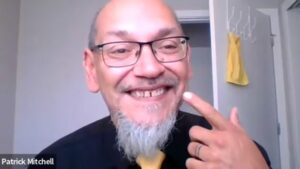
Panelist Patrick Mitchell wears a yellow tie that he calls “the yellow flame of optimism.”
“When we collaborate for a common cause, it’s amazing what we can do. And when you are given a clean slate. What will you do?”
Michell recounted the necessities to build resilient communities including, having site-specific weather data, water security, food security, and shelter.
He concluded his presentation by saying, “Where are the good news stories? I’m from Lytton and I’m still smiling, and I still believe…My paper ends with: We know what to do, we just need to do it. Our biggest challenge is learning to unlearn learned behaviour.”
Next steps for moving forward
The panellists agreed that much of the work to be done can be accomplished by starting within the communities. There are also ways we can all be a part of the solution like attending informative events and engaging in antiracism.
When it comes down to it, the climate crisis is a global issue that must be approached on a local level. Communities must be rebuilt for resilience for generations to come and it all starts with self-determination.
Watch the full roundtable discussion here.

Jennie Hornick is in the process of completing her publishing certificate at Centennial College to complement her Bachelor of Arts in Media Studies from Western University.
Featured image credit: Getty Images.




